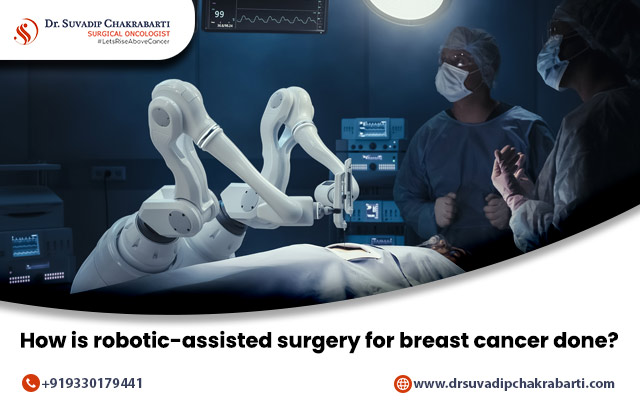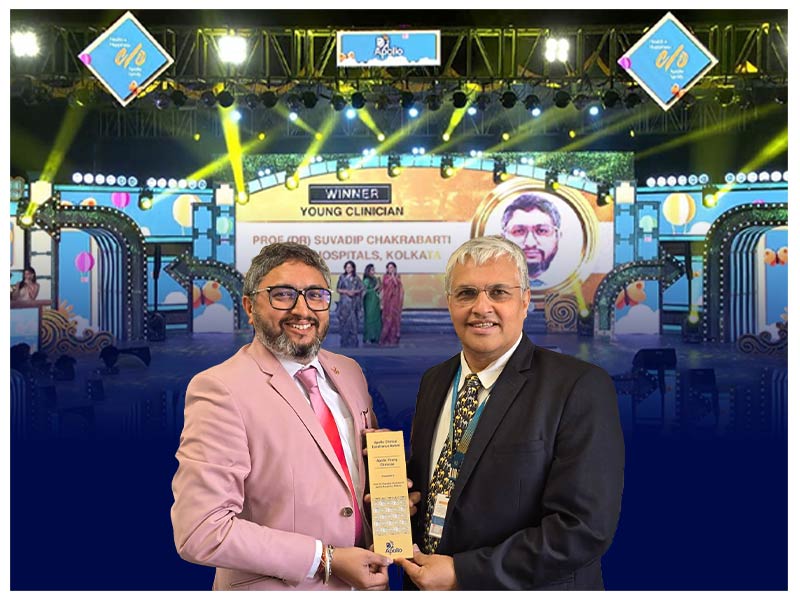Breast cancer treatment has advanced significantly over the years and one of the most innovative techniques available today is robotic-assisted surgery. This cutting-edge approach offers several benefits, including greater precision, smaller incisions and quicker recovery times. Dr. Suvadip Chakrabarti, a leading oncologist in Kolkata, is at the forefront of utilizing this technology to provide the best possible care for his patients. Let’s explore how robotic-assisted surgery for breast cancer is performed.
Understanding Robotic-Assisted Surgery
Robotic-assisted surgery involves performing surgical procedures using a sophisticated robotic system. The surgeon controls the robotic arms holding surgical instruments and a high-definition 3D camera. This setup allows for more excellent mastery and control, enabling the surgeon to operate with enhanced precision.
Preparing for the Surgery
Before the surgery, the patient undergoes several evaluations to ensure they are suitable for robotic-assisted surgery. These evaluations include imaging tests such as mammograms, MRIs, and biopsies to determine the exact location and size of the tumour. Dr Chakrabarti, an oncologist specialist in Kolkata and his team will also review the patient’s medical history and discuss any potential risks and benefits.
The Surgical Procedure
- Anaesthesia: The patient is placed under general anaesthesia to ensure they are comfortable and pain-free during the procedure.
- Incisions: Small incisions are made in the breast area. These incisions are much smaller than those used in traditional surgery, which helps reduce scarring and promotes quicker healing.
- Inserting the Robotic Instruments: The robotic arms are inserted through these incisions. The high-definition 3D camera provides a magnified view of the surgical site, allowing Dr Chakrabarti to see the tissues in great detail.
- Removing the Tumour: Using the robotic arms, the surgeon carefully removes the cancerous tissue. The precision of the robotic system ensures that surrounding healthy tissues are minimally affected.
- Reconstructive Surgery: In some cases, reconstructive surgery is performed immediately after removing the tumour. This can also be done using the robotic system, providing seamless and efficient care.
Post-Surgery Care
After the surgery, patients are monitored in a recovery room until the effects of the anaesthesia wear off. Compared to traditional surgery, most patients experience less pain and recover faster. Dr Chakrabarti, a robotics cancer surgeon in Kolkata, will provide detailed post-operative care instructions, including how to care for the incisions, manage pain, and schedule follow-up appointments.
Benefits of Robotic-Assisted Surgery
- Precision: The robotic system allows for the precise removal of cancerous tissues, preserving as much healthy tissue as possible.
- Minimal Scarring: Smaller incisions result in less visible scarring.
- Faster Recovery: Patients typically experience a quicker recovery and less post-operative pain.
- Reduced Risk of Complications: The enhanced precision reduces the risk of complications during and after surgery.
Conclusion
Robotic-assisted surgery for breast cancer is a revolutionary technique that offers numerous benefits for patients. As a leading oncologist in Kolkata, Dr. Suvadip Chakrabarti’s expertise in this field ensures that patients receive top-quality care with the latest technological advancements. If you or a loved one is facing breast cancer, consider discussing robotic-assisted surgery as a potential option for treatment.


